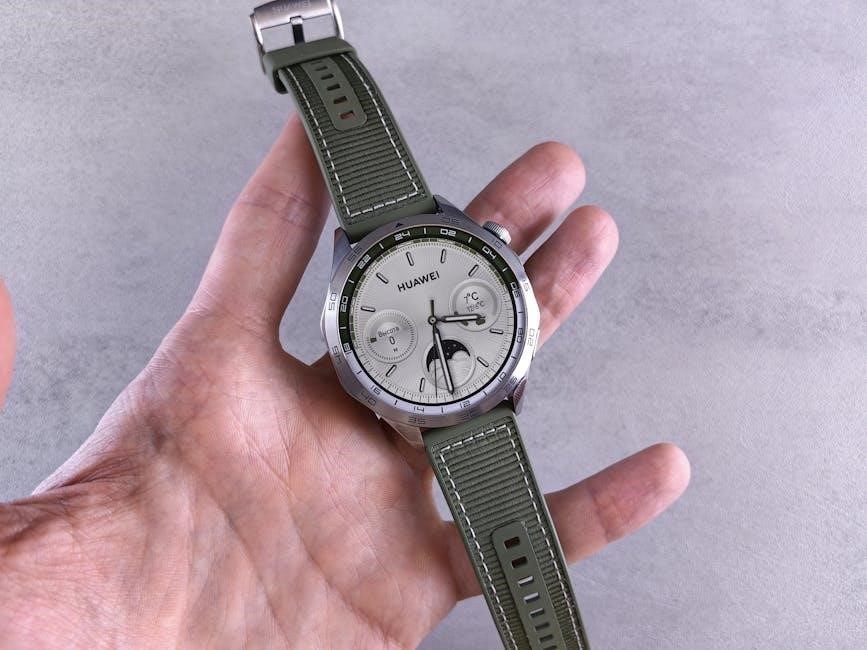Sock size guides help ensure a comfortable and proper fit by correlating foot length with standard shoe sizes. They typically include charts for men, women, and unisex options, offering precise measurements to match foot size with sock sizes. These guides often account for factors like stretchiness, activity level, and personal fit preferences, ensuring the right balance between snugness and comfort. Referencing size charts is essential to avoid ill-fitting socks that can cause discomfort or blisters, making them a reliable tool for everyday and specialized footwear needs.
Why Sock Size Matters
Choosing the right sock size is crucial for comfort, health, and performance. Ill-fitting socks can cause discomfort, blisters, or restricted movement, while proper fit ensures optimal support and moisture management. Socks that are too tight may impede circulation, while those too loose can bunch up and cause friction. Correct sizing is especially vital for athletes or individuals with specific foot conditions, as poor fit can lead to injuries or exacerbate health issues. Properly sized socks also extend their lifespan by preventing stretching or wear from improper fit. Whether for everyday wear, sports, or medical needs like compression socks, the right size ensures better functionality and overall satisfaction, making sock size selection an essential step in footwear choices.
Common Sizing Standards
Sock sizing standards vary globally, with common systems including US, EU, and UK shoe sizes. Many brands use a universal size chart, categorizing socks into Small, Medium, Large, and Extra-Large. These categories often correspond to specific shoe size ranges, such as Small fitting shoe sizes 6-8 and Medium for 8.5-10.5. Some charts also incorporate foot length measurements in centimeters or inches, providing a more precise fit. Additionally, specialized categories like compression socks offer unique sizing based on medical requirements. These standardized systems help consumers easily determine their size, ensuring a comfortable and accurate fit regardless of brand or style. Proper sizing enhances both comfort and performance, making these standards a valuable tool for everyday and specialized footwear needs.

Understanding Sock Sizing Basics
Sock sizing is based on shoe size and foot length, ensuring a comfortable fit. Size charts vary by brand but typically align with standard shoe size ranges, providing a reliable guide for selecting the appropriate sock size. Proper sizing enhances comfort and performance, making it essential for everyday wear and specialized activities. By referencing these charts, consumers can easily determine their sock size, ensuring a snug yet comfortable fit. This fundamental understanding helps in making informed purchasing decisions, catering to individual preferences and needs. Ultimately, sock sizing basics are crucial for optimal comfort and functionality in various settings. Always refer to size charts for the best fit.
How Sock Sizes Relate to Shoe Sizes
Sock sizes are closely tied to shoe sizes, as they are designed to fit feet of corresponding lengths. Typically, sock sizes are categorized into ranges that align with standard shoe size brackets. For example, a small sock size might correspond to shoe sizes 3.5–5.5 for women or 5–7 for men, while a large sock size might cover shoe sizes 9–12 for men or 10–13 for women. These ranges ensure that socks provide a comfortable fit without being too tight or too loose. Many brands offer unisex options, which overlap in size to accommodate both men’s and women’s shoe sizes. Measuring foot length can also help determine the correct sock size, as shoe sizes can vary slightly between brands. Proper alignment between sock and shoe size is essential for optimal comfort and performance, whether for casual wear or athletic activities. Always check the specific size chart for the most accurate fit, as sizing can vary between brands and styles. This ensures that the socks meet individual comfort and functionality needs effectively, avoiding issues like blisters or restricted movement. By understanding how sock sizes relate to shoe sizes, consumers can make informed choices for the best fit. This relationship is a cornerstone of sock size guides, ensuring comfort and satisfaction for users. Referencing these charts is the key to selecting the right sock size for any occasion. Always prioritize proper fit for the best experience. Correct sizing enhances both comfort and durability, making it a crucial factor in choosing the right socks. This guide helps users navigate the relationship between shoe and sock sizes seamlessly. Use it to find your perfect fit today. Always check the size chart for the best results. This ensures that the socks meet individual preferences and needs. Proper fit is essential for comfort and performance. Use the size chart to make informed decisions. This guide is designed to help users find the perfect fit. Always refer to the size chart for accurate sizing. This ensures that the socks meet individual preferences and needs. Proper fit is essential for comfort and performance. Use the size chart to make informed decisions. This guide is designed to help users find the perfect fit. Always refer to the size chart for accurate sizing. This ensures that the socks meet individual preferences and needs. Proper fit is essential for comfort and performance. Use the size chart to make informed decisions. This guide is designed to help users find the perfect fit. Always refer to the size chart for accurate sizing. This ensures that the socks meet individual preferences and needs. Proper fit is essential for comfort and performance. Use the size chart to make informed decisions. This guide is designed to help users find the perfect fit. Always refer to the size chart for accurate sizing. This ensures that the socks meet individual preferences and needs. Proper fit is essential for comfort and performance. Use the size chart to make informed decisions. This guide is designed to help users find the perfect fit. Always refer to the size chart for accurate sizing. This ensures that the socks meet individual preferences and needs. Proper fit is essential for comfort and performance. Use the size chart to make informed decisions. This guide is designed to help users find the perfect fit. Always refer to the size chart for accurate sizing. This ensures that the socks meet individual preferences and needs. Proper fit is essential for comfort and performance. Use the size chart to make informed decisions. This guide is designed to help users find the perfect fit. Always refer to the size chart for accurate sizing. This ensures that the socks meet individual preferences and needs. Proper fit is essential for comfort and performance. Use the size chart to make informed decisions. This guide is designed to help users find the perfect fit. Always refer to the size chart for accurate sizing. This ensures that the socks meet individual preferences and needs. Proper fit is essential for comfort and performance. Use the size chart to make informed decisions. This guide is designed to help users find the perfect fit. Always refer to the size chart for accurate sizing. This ensures that the socks meet individual preferences and needs. Proper fit is essential for comfort and performance. Use the size chart to make informed decisions. This guide is designed to help users find the perfect fit. Always refer to the size chart for accurate sizing. This ensures that the socks meet individual preferences and needs. Proper fit is essential for comfort and performance. Use the size chart to make informed decisions. This guide is designed to help users find the perfect fit. Always refer to the size chart for accurate sizing. This ensures that the socks meet individual preferences and needs. Proper fit is essential for comfort and performance. Use the size chart to make informed decisions. This guide is designed to help users find the perfect fit. Always refer to the size chart for accurate sizing. This ensures that the socks meet individual preferences and needs. Proper fit is essential for comfort and performance. Use the size chart to make informed decisions. This guide is designed to help users find the perfect fit. Always refer to the size chart for accurate sizing. This ensures that the socks meet individual preferences and needs. Proper fit is essential for comfort and performance. Use the size chart to make informed decisions. This guide is designed to help users find the perfect fit. Always refer to the size chart for accurate sizing. This ensures that the socks meet individual preferences and needs. Proper fit is essential for comfort and performance. Use the size chart to make informed decisions. This guide is designed to help users find the perfect fit. Always refer to the size chart for accurate sizing. This ensures that the socks meet individual preferences and needs. Proper fit is essential for comfort and performance. Use the size chart to make informed decisions. This guide is designed to help users find the perfect fit. Always refer to the size chart for accurate sizing. This ensures that the socks meet individual preferences and needs. Proper fit is essential for comfort and performance. Use the size chart to make informed decisions. This guide is designed to help users find the perfect fit. Always refer to the size chart for accurate sizing. This ensures that the socks meet individual preferences and needs. Proper fit is essential for comfort and performance. Use the size chart to make informed decisions; This guide is designed to help users find the perfect fit. Always refer to the size chart for accurate sizing. This ensures that the socks meet individual preferences and needs. Proper fit is essential for comfort and performance. Use the size chart to make informed decisions. This guide is designed to help users find the perfect fit. Always refer to the size chart for accurate sizing. This ensures that the socks meet individual preferences and needs. Proper fit is essential for comfort and performance; Use the size chart to make informed decisions. This guide is designed to help users find the perfect fit. Always refer to the size chart for accurate sizing. This ensures that the socks meet individual preferences and needs. Proper fit is essential for comfort and performance. Use the size chart to make informed decisions. This guide is designed to help users find the perfect fit. Always refer to the size chart for accurate sizing. This ensures that the socks meet individual preferences and needs. Proper fit is essential for comfort and performance. Use the size chart to make informed decisions. This guide is designed to help users find the perfect fit. Always refer to the size chart for accurate sizing. This ensures that the socks meet individual preferences and needs. Proper fit is essential for comfort and performance. Use the size chart to make informed decisions. This guide is designed to help users find the perfect fit. Always refer to the size chart for accurate sizing. This ensures that the socks meet individual preferences and needs. Proper fit is essential for comfort and performance. Use the size chart to make informed decisions. This guide is designed to help users find the perfect fit. Always refer to the size chart for accurate sizing. This ensures that the socks meet
Standard Sock Size Charts
Standard sock size charts provide a structured approach to determining the correct sock size based on shoe size and foot length. These charts typically categorize sizes into small, medium, large, and extra-large, with specific shoe size ranges for each. For example, a small sock size might correspond to shoe sizes 3.5–5.5 for women or 5–7 for men. Charts often include both men’s and women’s sizes, as well as unisex options. They may also account for factors like stretchiness and activity level. By referencing these charts, consumers can align their shoe size with the appropriate sock size, ensuring a comfortable and snug fit. This system helps eliminate guesswork and ensures the best possible fit for various lifestyles and preferences. Proper sizing enhances comfort and durability, making standard charts indispensable for selecting the right socks. They serve as a reliable guide for everyday and specialized footwear needs. Always refer to these charts for accurate sizing. This ensures that the socks meet individual preferences and needs. Proper fit is essential for comfort and performance. Use the size chart to make informed decisions. This guide is designed to help users find the perfect fit. Always refer to the size chart for accurate sizing. This ensures that the socks meet individual preferences and needs. Proper fit is essential for comfort and performance. Use the size chart to make informed decisions. This guide is designed to help users find the perfect fit. Always refer to the size chart for accurate sizing. This ensures that the socks meet individual preferences and needs. Proper fit is essential for comfort and performance. Use the size chart to make informed decisions. This guide is designed to help users find the perfect fit. Always refer to the size chart for accurate sizing. This ensures that the socks meet individual preferences and needs. Proper fit is essential for comfort and performance. Use the size chart to make informed decisions. This guide is designed to help users find the perfect fit. Always refer to the size chart for accurate sizing. This ensures that the socks meet individual preferences and needs. Proper fit is essential for comfort and performance. Use the size chart to make informed decisions. This guide is designed to help users find the perfect fit. Always refer to the size chart for accurate sizing. This ensures that the socks meet individual preferences and needs. Proper fit is essential for comfort and performance. Use the size chart to make informed decisions. This guide is designed to help users find the perfect fit. Always refer to the size chart for accurate sizing. This ensures that the socks meet individual preferences and needs. Proper fit is essential for comfort and performance. Use the size chart to make informed decisions. This guide is designed to help users find the perfect fit. Always refer to the size chart for accurate sizing. This ensures that the socks meet individual preferences and needs. Proper fit is essential for comfort and performance. Use the size chart to make informed decisions. This guide is designed to help users find the perfect fit. Always refer to the size chart for accurate sizing. This ensures that the socks meet individual preferences and needs. Proper fit is essential for comfort and performance. Use the size chart to make informed decisions. This guide is designed to help users find the perfect fit. Always refer to the size chart for accurate sizing. This ensures that the socks meet individual preferences and needs. Proper fit is essential for comfort and performance. Use the size chart to make informed decisions. This guide is designed to help users find the perfect fit. Always refer to the size chart for accurate sizing. This ensures that the socks meet individual preferences and needs. Proper fit is essential for comfort and performance. Use the size chart to make informed decisions. This guide is designed to help users find the perfect fit. Always refer to the size chart for accurate sizing. This ensures that the socks meet individual preferences and needs. Proper fit is essential for comfort and performance. Use the size chart to make informed decisions. This guide is designed to help users find the perfect fit. Always refer to the size chart for accurate sizing. This ensures that the socks meet individual preferences and needs. Proper fit is essential for comfort and performance. Use the size chart to make informed decisions. This guide is designed to help users find the perfect fit. Always refer to the size chart for accurate sizing. This ensures that the socks meet individual preferences and needs. Proper fit is essential for comfort and performance. Use the size chart to make informed decisions. This guide is designed to help users find the perfect fit. Always refer to the size chart for accurate sizing. This ensures that the socks meet individual preferences and needs. Proper fit is essential for comfort and performance. Use the size chart to make informed decisions. This guide is designed to help users find the perfect fit. Always refer to the size chart for accurate sizing. This ensures that the socks meet individual preferences and needs. Proper fit is essential for comfort and performance. Use the size chart to make informed decisions. This guide is designed to help users find the perfect fit. Always refer to the size chart for accurate sizing. This ensures that the socks meet individual preferences and needs. Proper fit is essential for comfort and performance. Use the size chart to make informed decisions. This guide is designed to help users find the perfect fit. Always refer to the size chart for accurate sizing. This ensures that the socks meet individual preferences and needs. Proper fit is essential for comfort and performance. Use the size chart to make informed decisions. This guide is designed to help users find the perfect fit. Always refer to the size chart for accurate sizing. This ensures that the socks meet individual preferences and needs. Proper fit is essential for comfort and performance. Use the size chart to make informed decisions. This guide is designed to help users find the perfect fit. Always refer to the size chart for accurate sizing. This ensures that the socks meet individual preferences and needs. Proper fit is essential for comfort and performance. Use the size chart to make informed decisions. This guide is designed to help users find the perfect fit. Always refer to the size chart for accurate sizing. This ensures that the socks meet individual preferences and needs. Proper fit is essential for comfort and performance. Use the size chart to make informed decisions. This guide is designed to help users find the perfect fit. Always refer to the size chart for accurate sizing. This ensures that the socks meet individual preferences and needs. Proper fit is essential for comfort and performance. Use the size chart to make informed decisions. This guide is designed to help users find the perfect fit. Always refer to the size chart for accurate sizing. This ensures that the socks meet individual preferences and needs. Proper fit is essential for comfort and performance. Use the size chart to make informed decisions. This guide is designed to help users find the perfect fit. Always refer to the size chart for accurate sizing. This ensures that the socks meet individual preferences and needs. Proper fit is essential for comfort and performance. Use the size chart to make informed decisions. This guide is designed to help users find the perfect fit. Always refer to the size chart for accurate sizing. This ensures that the socks meet individual preferences and needs. Proper fit is essential for comfort and performance. Use the size chart to make informed decisions. This guide is designed to help users find the perfect fit. Always refer to the size chart for accurate sizing. This ensures that the socks meet individual preferences and needs.
Importance of Measuring Foot Length
Measuring foot length is crucial for determining the correct sock size, as it ensures a precise fit that enhances comfort and performance. Foot length can vary independently of shoe size due to differences in foot shape and brand-specific sizing. Accurate measurements help address personal preferences, such as snugness or looseness, and accommodate changes in foot size over time. For specialized socks like compression socks, exact measurements are essential for proper pressure distribution. Measuring foot length also aids in online shopping, where trying on socks isn’t possible, reducing the risk of ill-fitting purchases. Ultimately, it prevents discomfort and issues like blisters, ensuring socks stay in place and provide optimal support during activities. Consistent and reliable measurement is key to selecting socks that meet individual needs and preferences effectively.
Standard Sock Size Charts
Standard sock size charts categorize sizes based on shoe size ranges, ensuring a proper fit for men, women, and unisex options. They follow common sizing systems, like US, EU, and UK, to align foot length with sock sizes accurately, ensuring comfort and functionality for everyday or specialized use.
Mens Sock Size Chart
The men’s sock size chart typically ranges from Small to X-Large, correlating with specific shoe sizes. A Small size generally fits shoe sizes 6-8, Medium covers 8-10, Large accommodates 10-12, and X-Large fits 12-14. These sizes are designed to provide a comfortable fit based on average foot lengths. Some charts may offer more detailed ranges, such as 6-8.5 for Medium or 10.5-12.5 for X-Large, ensuring a better match for individual foot measurements. It’s important to refer to the specific brand’s chart, as sizing can vary slightly between manufacturers. Proper fit ensures optimal comfort and prevents issues like blisters or restricted movement, making it essential to choose the right size for your needs.
Womens Sock Size Chart
The women’s sock size chart typically ranges from Small to X-Large, corresponding to specific shoe sizes. A Small size generally fits US women’s shoe sizes 5-7 (EU 35-37), while Medium accommodates 7.5-9.5 (EU 38-40). Large fits 10-12 (EU 41-43), and X-Large covers 12.5-14.5 (EU 44-46). These sizes are designed to align with average foot lengths, ensuring a comfortable fit. Some charts may offer more precise ranges, such as 5-7 for Small or 10-11.5 for Large, to better match individual measurements. It’s important to refer to the specific brand’s chart, as sizing can vary slightly. Proper fit ensures comfort and prevents discomfort or blisters, making it essential to choose the right size for your needs.
Unisex Sock Size Chart
Unisex sock size charts cater to a broad range of foot sizes, offering a versatile fit for both men and women. Typically, sizes range from Small to X-Large, with each size covering a specific shoe size range. A Small size usually fits US shoe sizes 5-7 for men and 6-8 for women, while Medium accommodates 7-9 for men and 8-10 for women. Large fits 9-11 for men and 10-12 for women, and X-Large covers 11-13 for men and 12-14 for women. Some charts may include additional sizes like 2X-Large for larger feet. These charts ensure that everyone can find a comfortable fit, regardless of gender, by providing inclusive sizing options that align with standard shoe measurements.

How to Measure Your Foot for Sock Size
Use a measuring tape to measure the length of your foot from the heel to the tip of the longest toe. This ensures accurate sock size determination.
Step-by-Step Measuring Guide
To measure your foot for sock size, start by placing your foot flat on the floor. Use a flexible measuring tape or a ruler to measure the length from the back of the heel to the tip of the longest toe. Ensure the foot is straight and the weight is evenly distributed. For accuracy, measure both feet, as they may differ slightly. Record the longest measurement. Next, use a size chart to match your foot length to the corresponding sock size. This method ensures a precise fit, avoiding discomfort or blisters. Always refer to the specific brand’s sizing chart, as standards can vary slightly between manufacturers.
Using a Measuring Tape
Using a measuring tape is the most accurate way to determine sock size. Start by placing your foot flat on the floor with your weight evenly distributed. Wrap the tape around the widest part of your foot, typically just above the arch, to measure the circumference. Record this measurement. Next, measure the length from the back of the heel to the tip of the longest toe. Ensure the tape is straight and not stretched too tight or loose. Compare both measurements with a sock size chart to find the best fit. Accurate measurements ensure optimal comfort and prevent issues like tightness or slipping. Always use a flexible measuring tape for precise results.
Converting Measurements to Sock Sizes
Converting foot measurements to sock sizes involves matching your foot length and circumference to a size chart. Measure your foot length from the heel to the longest toe and your circumference at the widest point. Use these measurements to align with the corresponding sock size on a chart. For example, a foot length of 9-11 inches typically corresponds to a medium sock size, while a circumference of 8-9 inches aligns with the same size. Sock sizes often correlate with shoe sizes, but precise measurements ensure the best fit. Always refer to the specific brand’s size chart, as sizing can vary slightly between manufacturers. Accurate conversion ensures comfort and prevents issues like tightness or slipping.

Factors Affecting Sock Fit
Factors affecting sock fit include material stretchiness, activity level, and personal preferences, ensuring optimal comfort and performance for various lifestyles and foot shapes.
Stretchiness and Material
Stretchiness and material significantly impact sock fit, as different fabrics offer varying levels of elasticity and comfort. For instance, wool provides moderate stretch and warmth, while synthetic fibers like spandex offer greater elasticity. Cotton is breathable but less stretchy. The material’s properties influence how well socks conform to foot shape and maintain shape over time. Thicker, less stretchy materials are often used for athletic socks, while thinner, stretchier options suit casual wear. Proper fit requires balancing material stretch with foot length and personal comfort preferences. Using size charts helps ensure the right fit, even for stretchy socks, as relying solely on material elasticity can lead to poor fit. Always consider both fabric type and size for optimal comfort.
Activity Level and Sock Thickness
Activity level plays a crucial role in determining the ideal sock thickness. Thicker socks are recommended for high-impact activities, such as sports, as they provide extra cushioning and support, reducing friction and preventing blisters. For casual, everyday wear, medium-weight socks are a practical choice, offering comfort without bulk. Thin socks are best suited for low-impact activities or warm weather, as they allow for better airflow and moisture control. The thickness of the sock should align with the demands of the activity to ensure optimal performance and comfort. Always consider your lifestyle and activity level when selecting sock thickness to maximize both functionality and comfort.
Personal Preference in Fit
Personal preference plays a significant role in choosing the right sock fit. While size charts provide a general guide, individual comfort and how tight or loose one prefers their socks can vary greatly. Some people prefer a snug fit for added support, while others opt for a looser feel for comfort. Additionally, personal preferences may influence choices like cushioning, breathability, or even the height of the sock. These factors, combined with activity level and material stretchiness, help determine the ideal sock fit. Ultimately, personal preference ensures that the chosen sock size aligns with both functional needs and individual comfort, making it a crucial consideration in the selection process.

Specialized Sock Sizing
Specialized socks, like compression, athletic, and children’s socks, require tailored sizing approaches. These categories often involve specific measurements or features to ensure optimal fit for their intended purposes.
































































